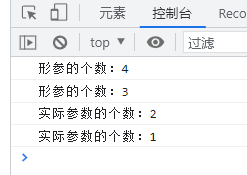箭头函数没有自己的 this,与外层函数保持一致
所有函数在执行时,会创建一个函数执行上下文,普通函数的执行上下文中会有一个变量 this,而箭头函数没有。
箭头函数中如果出现了 this ,它会永远去拿定义时、作用域链上、最近的那个 this,比如下面 demo 中,取的就是全局执行环境中的 this,指向全局对象。
<script>
var id = 'wgchen'
// 箭头函数定义在全局作用域
let fun1 = () => {
console.log(this.id)
}
fun1(); // 'wgchen'
// this的指向不会改变,永远指向Window对象
fun1.call({ id: 'Obj' }) // 'wgchen'
</script>
思考题:下面的代码会输出什么?
<script>
var id = 'wgchen'
function fun1() {
// setTimeout中使用普通函数
setTimeout(function fun3() {
console.log(this.id)
}, 2000);
}
function fun2() {
// setTimeout中使用箭头函数
setTimeout(() => {
console.log(this.id)
}, 2000);
}
fun1(); // 'wgchen'
fun2(); // 'wgchen'
fun1.call({ id: 'Obj' }) // 'wgchen'
fun2.call({ id: 'Obj' }) // 'Obj'
</script>
1、fun3 本身有 this,因为 setTimout 使得 fun3 是在全局上下文中执行,这个 this 指向全局执行环境;
2、同理,setTimout 使得箭头函数是在全局上下文中执行,但是箭头函数本身没有 this,它会沿着作用域链查找,找到 fun2 中创建的 this,也指向全局执行环境;
3、fun1.call 调用过程中,修改了 fun1 的 this 指向,但 fun3 本身也创建有 this,setTimeout 使得这个 this 指向全局执行环境;
4、fun1.call 调用过程中,修改了 fun1 的 this 指向,箭头函数没有 this,按照作用域链找到 fun1 的 this,于是最后指向 {id: ‘Obj’}。
箭头函数不能作为构造函数
因为箭头函数没有自己的 this 变量,我们就没有办法修改 this 的指向,所以也不可以将其作为构造函数、它也没有 prototype 对象。
let Fun = (name, age) => {
this.name = name
this.age = age
}
// 报错
let p = new Fun('mybj', 4)
箭头函数没有 arguments 对象
大概很多人都没用 arguments 对象,它是在所有普通函数中都可用的一个局部变量。
代表函数调用时传递的参数,arguments 对象不是一个数组,是一个类数组。
它除了 length 属性和索引之外,没有任何数组属性,比如 slice 等方法。
所以通常会使用使用 Array.prototype.slice.call(arguments)/[...arguments] 的方式,将它转换成一个数组。
<script>
let showArguments = function () {
// Arguments(2) ['params1', 'params2', callee: ?, Symbol(Symbol.iterator): ?]
console.log(arguments)
// ['params1', 'params2']
console.log(Array.prototype.slice.call(arguments))
}
showArguments('params1', 'params2')
</script>

箭头函数和普通函数共有的 length 属性
这部分不属于区别,但写到这里想补充一下。这也是一个不太常见的属性,做过一些手撕题的应该都使用过。
函数的 length 属性,是指形参的个数
准确说是:
第一个具有默认值之前的参数个数,并且不包括剩余参数个数。
与之相对应的是,arguments.length 指的是实际参数的个数。
<script>
const showLength = function(a, b, c, d){
console.log(`实际参数的个数:${arguments.length}`)
}
console.log(`形参的个数:${showLength.length}`) //形参的个数:4
//形参的个数:3
console.log(`形参的个数:${showLength.bind(this, '3').length}`)
showLength('1','2');// 实际参数的个数:2
showLength.call(this, '3') // 实际参数的个数:1
</script>
